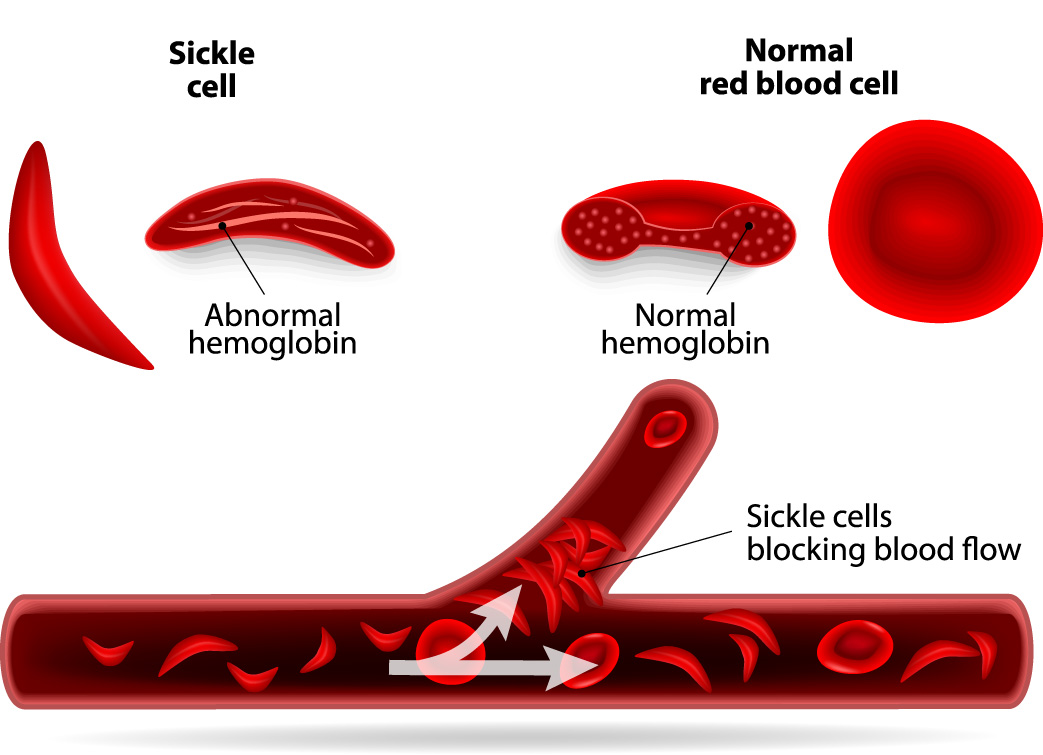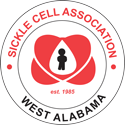About 100,000 people in the U.S. have sickle cell disease. Nearly 3 million have sickle cell trait.
What is Sickle Cell Disease?
Sickle Cell Disease (SCD) is an inherited red blood cell disorder that causes healthy, round red blood cells to become hard, sticky, and c-shaped—just like the farm tool called a “sickle”. SCD is a dangerous and painful condition because the odd shape of the blood cells can block blood flow, cause extreme pain, anemia, and more.
What is Sickle Cell Trait?
Sickle cell trait (SCT) means that someone is a carrier for one copy of the gene that causes sickle cell disease. In people with SCT, red blood cells contain some abnormal sickle hemoglobin, but most of the hemoglobin in each red blood cell is normal. People with SCT usually do not have any of the symptoms of SCD, but they can pass the trait on to their children.

What Health Problems Does Sickle Cell Disease Cause?
SCD can cause many health problems. Because of the hard, sticky nature of sickle cells, they can stick together and slow the rate of blood flow. In some instances, highly dangerous clots can form. Sickle cells also die early, causing anemia, a constant shortage of red blood cells in the body.
Some of the most common side effects of SCD include:
- Chronic pain in the chest, abdomen, joints, and bones that can last from a few hours to a few weeks
- Frequent infections caused by sickle cell damage to the spleen, a key organ than fights infections
- Vision problems caused by damage to the retina when blood vessels that supply the eye become plugged
- Delayed growth in children and teenagers due to a lack of oxygen and nutrients normally carried throughout the body by healthy red blood cells
- Anemia-induced weakness
- Stroke
- Leg ulcers
- Jaundice
SCD patients also have a shortened life expectancy to due to sickle cell related complications.
Who is Most Affected by Sickle Cell Disease?
People in all ethnic groups can have sickle cell trait or disease. That’s why all newborns in the United State are tested for this condition.
However, SCD and SCT are most common among African-Americans. In fact, 1 in 12 African-Americans carries a sickle cell gene.
Additional at-risk groups include Hispanics and people from Middle Eastern countries, as well people from southern Europe, southern Asia.
Is There a Cure?
There is no universally available cure for SCD. Regular medical care, adequate nutrition and hydration, and the avoidance of infections are essential steps for SCD self-management.
How Does The Sickle Cell Association—West Alabama Help?
We work to increase community awareness of SCD and SCT through education, genetic counseling, and screening and detection. We serve individuals who are affected or at-risk of sickle cell disease in nine west Alabama counties – Fayette, Greene, Hale, Lamar, Marion, Pickens, Sumter, Tuscaloosa, Winston.

